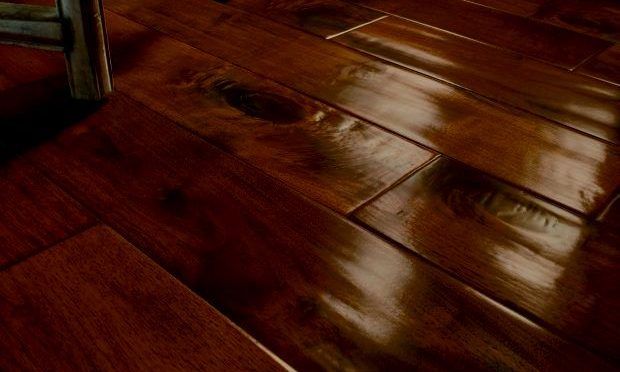How to Easily Install Vinyl Plank Flooring

After choosing your vinyl plank flooring, the hard work begins. Since vinyl plank flooring can be connected over concrete, wood, linoleum, ceramic tile floor and existing vinyl, laying it down may be more straightforward than you think. Installation depends on whether you’ve chosen glue-down or click-together. Budget friendly, low-maintenance, and long-wearing, putting in both types of vinyl plank flooring is easy if you follow these steps.
20 FLOORING INSTALLATION STEPS:
- Preparation is integral to proper vinyl plank flooring installation. Gather all the tools and materials you’ll need to get the job done, such as utility knife, floor pull bar, flooring, and chalk line.
- In the case of carpeting, or especially uneven floors, remove old flooring with tools recommended by a professional for the particular material.
- Ensure subfloor is dry, clean, and as level as possible. If it’s level, you’re set to start. However, you may need to apply self-leveling concrete on low spots and sand the wood or grind the concrete on high spots to smooth it out.
- If the floor is very uneven or damaged, placing an underlay is recommended.
- If there is any chance of moisture accumulating on concrete subfloor, ensure you place a vapour barrier beforehand.
- Remove baseboards prior to ensure painless floor installation.
- Sweep and vacuum thoroughly before beginning to ensure an even, clean work surface.
- Leave vinyl plank flooring to adjust to room temperature for a minimum of 48 hours.
- Mix planks from different boxes for placement to give the floors a more uniform look since some boxes may have slightly different shades. You can do this while they’re acclimating.
- Measure the room and plan arrangement. Maintain a 5/16” expansion gap at the perimeter of the flooring and stagger the joints.
- Use a chalk line to snap against the wall and mark a straight starting point.
- Score and cut the tongue off the first row of planks with a utility knife and ruler for a straight line.
- Settle the plank in place along the line with the cut line facing the wall.
- Place the next piece at a slight angle and fold it down to the floor.
- Score the final piece and snap it off to fit to the line at the wall. Keep in mind that the end piece should be at least 6 inches long. If it isn’t, you can cut the first piece and slide it to allow for a longer piece at the end.
- For the second row of vinyl planking, insert the tongue of the first piece into the previous row and turn downward. Connect the short, then the long end for the second piece. Lock into place.
- Continue as above with next rows, staggering the joints at least 6” and retaining the expansion gap.
- For installing under door jambs, you can gently bend the planks and use a pull bar or tapping block to lock.
- The above is for floating plank flooring. With peel and stick, simply peel the back and stick the vinyl plank flooring onto the subfloor. Place the back end of the plank against the starting wall. Bend the board as you go to ensure the end you’re installing is against the floor while the part yet to be placed is in the air. Carefully roll the board down onto the floor to prevent air pockets. Press to secure.
- Complete installation with transitions, and then trim. Nail trim to the wall, never the flooring.
Prior to beginning, be sure to examine the manufacturer’s instructions for any variations and take it slow if it’s your first floor installation. After all, you want to have a professional looking end product.
Follow these easy steps and you will soon be enjoying the look and comfort of your impressive new vinyl plank flooring. Contact the professionals at City Tile for more information and installation tips.
